- What are the wild animals?
- Examples of wild animals
- Difference between wild and domestic animals
- The shark
- The giraffe
- Elephant
- The Tiger
- The polar bear
- The blue whale
We explain what wild animals are, some examples and the main characteristics of these animals.
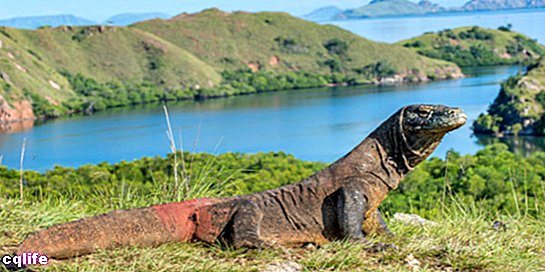
What are the wild animals?
Unlike domestic animals, accustomed to the presence of human beingWild animals are those that are kept in their original state, inhabiting spaces far from human intervention, and inserted in a natural dynamic to which their instincts respond. In other words, wild animals are those that do not know any relationship with the human being, and therefore perceive it as an element alien to their environment and their traditions.
Wild animals make up the bulk of the biodiversity and the innovation biological of our planet, in such a way that we still do not know a high percentage of the species that inhabit the densest of the jungles or in the most remote regions of the world. That does not prevent our expansive pattern of life from generally posing a threat to wildlife, as the pollution, the deforestation and indiscriminate hunting, when not the introduction of invasive species In natural habitats, they constitute some of the most damaging activities that humans engage in directly or indirectly.
For the latter, there are numerous associations and institutions dedicated to the ecology and the protection of endangered species, that is, those wild animals whose number is so small that the species runs the risk to be extinguished. There are wild species that exist only in captivity, where they try to reproduce to repopulate their habitats originals.
Examples of wild animals
Some examples of wild animals of air, land and sea are the following:
- White shark (Carcharodon carcharias)
- Lion (Panthera leo)
- Wolf (Canis lupus)
- Grizzly bear (Ursus arctos horribilis)
- Panda bear (Ailuropoda melanoleuca)
- Polar Bear (Ursus maritimus)
- Asian elephant (Elephas maximus)
- White rhino (Ceratotherium simum)
- Báquiro or mountain pig (Peccary tajacu)
- Tiger (Panthera tigris)
- Leopard (Panthera pardus)
- Jaguar (Panthera onca)
- Green Anaconda (Eunectes murinus)
- King Cobra (Ophiophagus hannah)
- Giant anteater (Myrmecophaga tridactyla)
- Coyote (Canis latrans)
- Golden Eagle (Aquila chrysaetos)
- Armadillo or large mulita (Dasypus novemcinctus)
- Black widow tarantula (Latrodectus tredecimguttatus)
- Orinoco Cayman (Crocodylus intermedius)
- Impala antelope (Aepyceros melampus)
- Reticulated python (Malayopython reticulatus)
- Giraffe (Giraffa camelopardis)
- Oceanic dolphin (Delphinus delphis)
- Orca (Orcinus orca)
- Common seal (Phoca vitulina)
- Western gorilla (Gorilla gorilla)
- Ostrich (Struthio camelus)
- Komodo dragon (Varanus komodoensis)
- Blue whale (Balaenoptera musculus)
- Andean condor (Vultur gryphus)
- Red kangaroo (Macropus rufus)
- Mantis or santateresa (Praying mantis)
- Barracuda fish (Sphyraena barracuda)
- Rhea (American rhea)
- Spotted hyena (Crocuta crocuta)
- Platypus (Ornithorynchus anatinus)
- Toucan tocoRamphastos touched)
- Orangutan (I put pygmaeus)
- Horseshoe crabLimulus polyphemus)
Difference between wild and domestic animals

Domestic animals are capable of forming a close bond with humans.
Just as wild animals are adapted to live in their natural habitat, subject to natural laws, that is, away from human intervention, some animals have learned to live with us, even inside our houses, training with us a close bond.
There are even cases in which they treat us as members of the same pack, and it is probable that our absence suffered greatly. These are domesticated animals. Before being domesticated, the animals were all wild, of course. Most of the world's animals still live this way, in their respective original habitats: the jungle, the desert, the sea, etc.
The shark
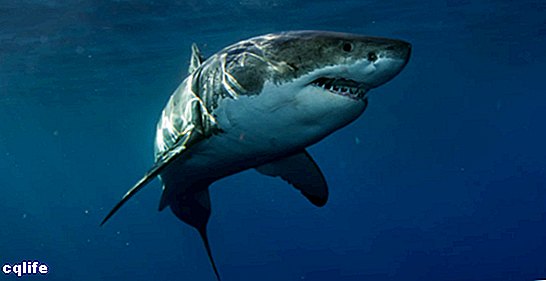
Sharks are some of the largest predators which has the marine habitat. They are generally large, cartilaginous fish, except for their teeth, made up of sharp and triangular teeth, of greater or lesser size.
Despite their threatening appearance, of the 375 known species of sharks in the world, only about two or three have carried out unprovoked attacks on humans, usually by mistaking them for some mammal marine part of their diet, like surfers with seals. Related to rays and chimeras, sharks have changed relatively little since their evolutionary origin in the Devonian period, nearly 400 million years ago.
The giraffe

Giraffes are a species of quadruped and very long-necked African mammals, being the tallest animals that exist today. Its height can touch 5.8 meters and its weight ranges between 750 and 1600 kilograms.
Another important feature is its mottled yellow fur, similar to that of the leopard, which is present in the second term of its scientific name: Giraffa camelopardalis, that is, "camel-leopard", which was how the Romans baptized it when they discovered the animal. The giraffe inhabits from North Africa to the south, from Chad to South Africa and from Niger to Somalia, but in a dispersed manner.
Elephant
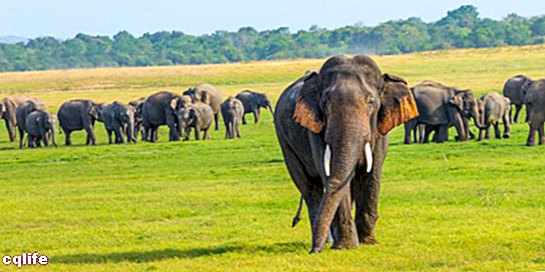
Another of the most fascinating mammals of Africa Y Asia, the elephant is a huge and massive creature, whose weight at birth it ranges from 120 kg and can reach 10,000 kg in adulthood. It also has a very characteristic nasal tube with which it can hold objects, feed, bathe and breathe.
With a height of almost four meters, it is the largest land animal that exists, associated in the culture human with noble emotions such as altruism or compassion, which has not prevented it from being hunted to the point of extinction of many species, to use the ivory from its tusks in different products (such as piano keys). The worst thing is that this animal has a brain of almost 4 kg in weight, which allows it an intelligence similar to that shown by some primates.
The Tiger
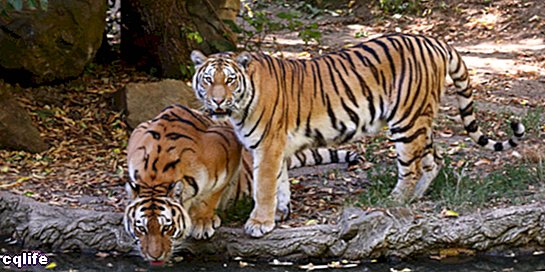
The largest predator in Asia is this carnivorous feline weighing between 47 and 250 kg and 190 to 330 cm in height. length (tail included). It has a very characteristic orange fur with black stripes and white areas, as well as sharp claws with which to hold its prey and a powerful bite with which to tear its flesh.
Excellent swimmers and climbers, they have a very characteristic roar, different from that of the Lion, and a very sharp night vision. They are fiercely territorial and in serious danger of extinction, largely due to indiscriminate hunting, now illegal in many Asian countries.
The polar bear
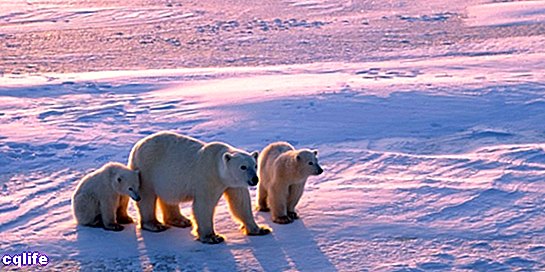
With snow-white fur, this fierce quadruped inhabits the polar regions of the Arctic, where it is excellently camouflaged with ice. Their diet consists of seals, fish, and other Marine animals rich in fats, which fishes thanks to its sharp claws.
The largest predator in the Arctic and one of the largest in the Earth, it has a weight that oscillates between 350 and 680 kg, and can measure about 2.6 meters of foot. Like so many others, it is in critical danger of extinction due to the destruction of its habitat, as a result of the global warming and the melting of the poles.
The blue whale
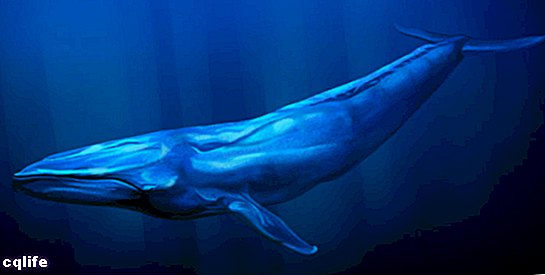
Also known as the blue fin whale, it is the largest animal that inhabits our planet, ranging between 24 and 27 meters in length and 100 to 120 tons in weight. Contrary to what its size might suggest, it is a docile and peaceful animal, which feeds on plankton marine and other tiny animals like krill, catching them from the Water with their long filtering beards.
It is also a marine mammal, with an incredible lung capacity of 5000 liters of air, so it can last a long time under water. When it comes out to breathe, however, it produces a characteristic jet of water that can reach 6 to 12 meters in height. Like many animals on this list, it is in danger of extinction due to indiscriminate hunting by humans.
